Vascular Surgery Guide Procedures, and Recovery
Explore common vascular surgery procedures, what to expect during recovery, and tips for a smoother healing process.

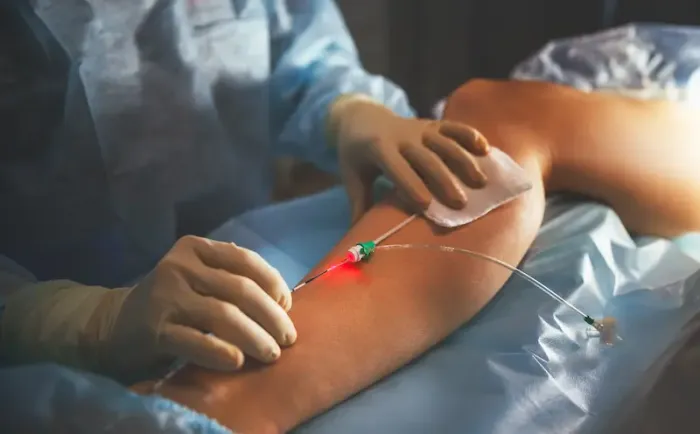
Introduction
Imagine your body's circulatory system as a complex, 60,000-mile-long network of highways, roads, and capillaries. This system, made up of arteries and veins, is responsible for delivering oxygen-rich blood and vital nutrients to every single cell, from your brain to your toes. When this network is clear and functioning well, life moves smoothly. But when blockages, weak spots, or damage occur a condition known as vascular disease, it can lead to serious health problems, from painful legs when walking to life-threatening events like a stroke or a ruptured aneurysm. This is where the field of vascular surgery comes in. Far from being just about major operations, modern vascular surgery is a sophisticated specialty focused on restoring blood flow and preserving limb and life, often through incredibly minimally invasive techniques. This guide will demystify vascular surgery, explaining the common conditions it treats, the innovative procedures available, and what you can expect on the road to recovery. Whether you're seeking information for yourself or a loved one, understanding your options is the first step toward better vascular health.
What is a Vascular Surgeon? More Than Just a Surgeon
A common misconception is that a vascular surgeon only performs operations in an operating room. In reality, a vascular surgeon is a highly specialised physician who manages a wide spectrum of diseases affecting the arteries, veins, and lymphatic system. They are experts in diagnosis, medical management, and intervention. After completing medical school and a general surgery residency, they undergo several additional years of fellowship training specifically in vascular disease.
Their role is comprehensive:
• Diagnosis: They interpret complex ultrasound and other imaging studies to pinpoint the exact nature and location of a vascular problem.
• Medical Management: For many patients, lifestyle changes and medications are the first line of treatment. A vascular surgeon will guide you on diet, exercise, and medications to control cholesterol, blood pressure, and diabetes.
• Interventional Procedures: They are skilled in both minimally invasive endovascular surgery (performed through tiny needle punctures) and traditional open surgery. This dual expertise allows them to recommend the best procedure for your specific condition, without bias toward one technique over another.
Think of them as master plumbers for your circulatory system, equipped with the latest tools to fix leaks, clear clogs, and reinforce weak spots with precision and care.
Consult a Vascular Surgeon for the best advice
Common Conditions That Lead to Vascular Surgery
Vascular surgeons treat a variety of conditions. Understanding these is key to recognising when you might need to seek their expertise.
Peripheral Artery Disease (PAD): When Leg Arteries Narrow
Peripheral Artery Disease (PAD) occurs when fatty deposits (plaque) build up in the arteries that carry blood to the limbs, most commonly the legs. This narrowing reduces blood flow, leading to symptoms like leg pain or cramping when walking (claudication), which often subsides with rest. In severe cases, critical limb ischemia can develop, causing pain at rest, non-healing wounds on the feet or toes, and a risk of gangrene and amputation. Vascular surgery for PAD aims to restore blood flow to salvage the limb and improve quality of life.
Aortic Aneurysms: The Silent Danger in Your Abdomen or Chest
An aortic aneurysm is a dangerous bulge or ballooning in the aorta, the body's main artery. Often called a "silent killer," it typically has no symptoms until it ruptures, which is a catastrophic event with a high mortality rate. Aneurysms are most common in the abdomen (Abdominal Aortic Aneurysm or AAA) but can also occur in the chest (Thoracic Aortic Aneurysm). Vascular surgeons monitor the size of aneurysms closely. When an aneurysm reaches a size where the risk of rupture is high, they will recommend repair, which can often be done minimally invasively.
Carotid Artery Disease: Preventing a Stroke
The carotid arteries on either side of your neck supply blood to the brain. When these arteries become narrowed by plaque, you are at a significantly increased risk of a stroke, as a piece of plaque or a blood clot can break off and travel to the brain. Vascular surgeons can perform a procedure called a carotid endarterectomy to clean out the plaque or place a stent to hold the artery open, dramatically reducing stroke risk.
Chronic Venous Insufficiency and Varicose Veins
While often considered cosmetic, bulging varicose veins can be a sign of an underlying problem called chronic venous insufficiency (CVI). This occurs when valves in the leg veins fail, causing blood to pool. This can lead to aching, swelling, skin changes, and even painful ulcers. Vascular surgeons offer a range of minimally invasive vein treatments, such as ablation and sclerotherapy, to seal off the faulty veins and redirect blood to healthier ones.
Diagnosis: How Vascular Problems are Uncovered
Before any treatment, an accurate diagnosis is crucial. Vascular surgery is supported by sophisticated diagnostic tools.
Non-Invasive Vascular Lab Tests
The first step is often a painless ultrasound in a vascular laboratory. An Ankle-Brachial Index (ABI) test, which compares blood pressure in your ankles and arms, is a simple and effective way to screen for PAD. Duplex ultrasounds can create detailed images of blood vessels and measure blood flow speed to identify blockages or blood clots.
Advanced Imaging: CTA and MRA
For a more detailed, 3D view of the vascular system, a vascular surgeon may order a CT Angiogram (CTA) or MR Angiogram (MRA). These scans use contrast dye to highlight the arteries and veins, providing a precise roadmap of any aneurysms, narrowings, or other abnormalities. This information is vital for planning the safest and most effective procedure.
Vascular Surgery Procedures: From Minimally Invasive to Open Surgery
The field has been revolutionised by technology, offering patients options that involve less pain and faster recovery.
Endovascular Surgery: The Minimally Invasive Revolution
Endovascular surgery is performed from inside the blood vessel. Instead of a large incision, the surgeon makes a small puncture, often in the groin or arm, and threads thin wires and catheters through the vessels to the problem area.
Angioplasty and Stenting: Opening Blocked Vessels from Within
For a narrowed artery, a small balloon (angioplasty) is inflated to compress the plaque and widen the artery. Often, a tiny mesh tube called a stent is then permanently placed to act as a scaffold and keep the artery open. This is a common treatment for PAD and blockages in the kidneys or intestines.
Endovascular Aneurysm Repair (EVAR)
For an abdominal aortic aneurysm, a vascular surgeon can insert a fabric-covered metal stent graft through the arteries. This graft is positioned inside the aneurysm, creating a new, strong channel for blood flow and effectively taking the pressure off the aneurysm wall, preventing rupture. Recovery from EVAR is significantly faster than open surgery.
Traditional Open Surgery: When It's Still Necessary
While minimally invasive techniques are preferred when possible, open surgery remains the best option for certain complex situations.
Bypass Surgery: Creating a New Route for Blood Flow
Similar to a heart bypass, this procedure uses a healthy blood vessel from another part of your body or a synthetic graft to create a detour around a severely blocked artery. This is a highly effective way to restore blood flow to a limb threatened by amputation.
Surgical Aneurysm Repair
For aneurysms that are not suitable for EVAR, the traditional approach involves an open abdominal or chest incision. The surgeon directly exposes the aneurysm and replaces the weakened section with a synthetic graft. This is a major operation but is a time-tested, durable solution.
The Recovery Journey: What to Expect After Vascular Surgery
Recovery varies dramatically based on the procedure. After a minimally invasive vein treatment or angioplasty, you might go home the same day and return to light activities within a week. Recovery from major open surgery, like an aortic bypass, will involve a hospital stay of several days to a week and a gradual return to normal activities over several weeks or months. Pain management, wound care, and early, gentle walking are key components of recovery. Your vascular surgeon and their team will provide detailed, personalised instructions.
Life After Vascular Surgery: Long-Term Management and Prevention
Vascular surgery fixes a specific problem, but it is not a cure for the underlying disease process (like atherosclerosis). Therefore, long-term management is essential to protect your results and overall health. This includes:
• Lifestyle Changes: Quitting smoking, adopting a heart-healthy diet, and engaging in regular exercise.
• Medication Adherence: Faithfully taking prescribed medications, such as antiplatelets (like aspirin or clopidogrel) and statins to control cholesterol.
• Regular Follow-ups: Attending all scheduled appointments with your vascular surgeon for imaging surveillance (especially after stent or aneurysm repair) to ensure everything remains stable.
If you are managing conditions like high blood pressure or diabetes post-surgery, consistent monitoring is key. For convenient check-ups, you can consult a doctor online with Apollo24|7 to manage your prescriptions and lifestyle plan.
Conclusion: Taking the Next Step for Your Vascular Health
Navigating the world of vascular surgery can seem daunting, but understanding the conditions, the advanced treatment options, and the importance of a specialised vascular surgeon empowers you to make informed decisions about your health. Modern techniques have made procedures safer and recoveries quicker than ever before. The goal is always to improve your quality of life, alleviate pain, prevent catastrophic events like strokes, and, most importantly, save limbs. If you are experiencing symptoms like leg pain with walking, non-healing wounds, or have been diagnosed with an aneurysm, do not delay in seeking expert care. Taking proactive steps today can ensure your body's vital highway system continues to support you for years to come.
Consult a Vascular Surgeon for the best advice
Consult a Vascular Surgeon for the best advice

Dr Yashpal Singh
Vascular and Endovascular Surgeon
18 Years • MBBS, MS (Gen. Surgery), DNB ( Peripheral Vascular Surgery)
Lucknow
Apollomedics Super Speciality Hospital, Lucknow

Dr. Prakash Goura
Vascular and Endovascular Surgeon
8 Years • MBBS , DNB ( GENERAL SURGERY) , MRCS, MCh ( VASCULAR & ENDOVASCULAR SURGERY)
Hyderabad
Apollo Hospitals Jubilee Hills, Hyderabad
(50+ Patients)
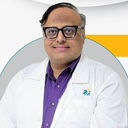
Dr. Lal Daga
Cardiologist
20 Years • MBBS, DNB [MED], DNB [CARDIO], FESC [INT], MNAMS
Ahmedabad
Apollo Hospitals Gandhinagar, Ahmedabad
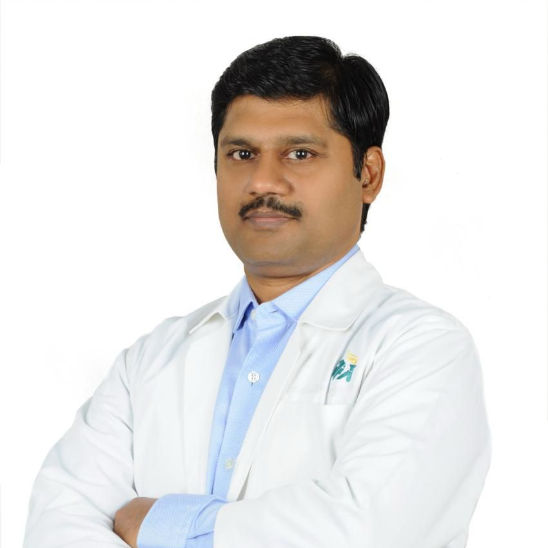
Dr. R. Jayakrishnan
Vascular Surgeon
20 Years • MBBS, MS, MRCS, MCH
Chennai
Apollo Medical Centre, Annanagar, Chennai
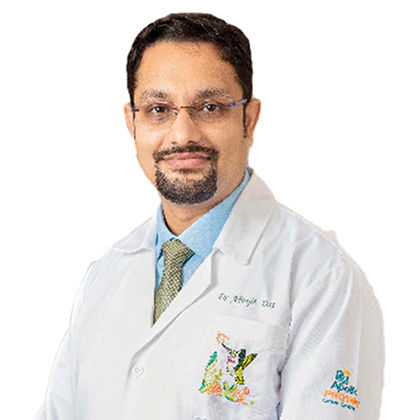
Dr. Abhijit Das
Surgical Oncologist
10 Years • MBBS MS, MCh (Surgical Oncology), Fellowship in Thoracic Oncology (SNUK, Korea), Fellowship in Advance Esophageal Surgery (NCC, Japan)
Chennai
Apollo Proton Cancer Center, Chennai
Consult a Vascular Surgeon for the best advice

Dr Yashpal Singh
Vascular and Endovascular Surgeon
18 Years • MBBS, MS (Gen. Surgery), DNB ( Peripheral Vascular Surgery)
Lucknow
Apollomedics Super Speciality Hospital, Lucknow

Dr. Prakash Goura
Vascular and Endovascular Surgeon
8 Years • MBBS , DNB ( GENERAL SURGERY) , MRCS, MCh ( VASCULAR & ENDOVASCULAR SURGERY)
Hyderabad
Apollo Hospitals Jubilee Hills, Hyderabad
(50+ Patients)

Dr. Lal Daga
Cardiologist
20 Years • MBBS, DNB [MED], DNB [CARDIO], FESC [INT], MNAMS
Ahmedabad
Apollo Hospitals Gandhinagar, Ahmedabad

Dr. R. Jayakrishnan
Vascular Surgeon
20 Years • MBBS, MS, MRCS, MCH
Chennai
Apollo Medical Centre, Annanagar, Chennai

Dr. Abhijit Das
Surgical Oncologist
10 Years • MBBS MS, MCh (Surgical Oncology), Fellowship in Thoracic Oncology (SNUK, Korea), Fellowship in Advance Esophageal Surgery (NCC, Japan)
Chennai
Apollo Proton Cancer Center, Chennai
More articles from General Medical Consultation
Frequently Asked Questions
1. What's the difference between a vascular surgeon and a cardiologist?
A cardiologist focuses primarily on the heart itself and the arteries immediately surrounding it (coronary arteries). A vascular surgeon treats blood vessel problems throughout the rest of the body in the neck, arms, abdomen, and legs.
2. Is vascular surgery very risky?
All surgeries carry some risk, but the risks of vascular surgery are weighed against the significant risks of leaving the underlying condition untreated (such as stroke, limb loss, or death). Minimally invasive procedures have substantially lowered the risk profile for many vascular operations.
3. How long does it take to recover from a minimally invasive aortic aneurysm repair (EVAR)?
Many patients are able to go home within 1-2 days after EVAR. Most can return to light activities within a week or two, but full recovery and a return to all normal activities may take 4-6 weeks. Your surgeon will provide specific guidelines.
4. Are varicose vein treatments covered by insurance?
When varicose veins are causing significant symptoms like pain, swelling, or skin ulcers, treatment is usually considered medically necessary and covered by insurance. If they are purely a cosmetic concern, coverage may not be provided.
5. What are the warning signs of Peripheral Artery Disease (PAD)?
The most common sign is leg pain or cramping that occurs during activity and goes away with rest (claudication). Other signs include coldness in the lower leg or foot, sores on toes/feet that won't heal, and a change in leg color.


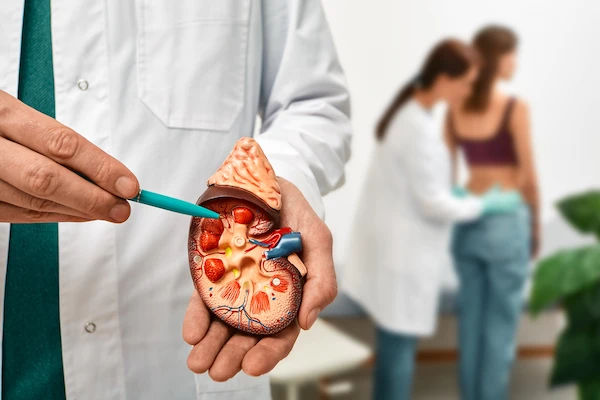

.webp)